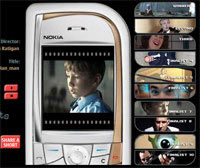 With a lucrative mobile market hungry for content, it’s not surprising to find a host of companies getting their thinking caps on.
With a lucrative mobile market hungry for content, it’s not surprising to find a host of companies getting their thinking caps on.
Conker Media, Mersey TV’s digital development and production division, has already created mobile content for teen-tastic TV soap Hollyoaks, but it’s aware of the challenge ahead:
“It’ll be interesting to see whether we can develop something which is effectively stand-alone and which doesn’t have a TV property with it,” said Lee Hardman, head of Conker Media in an interview with Peter Keighron at Broadcastnow.
“If you can crack that it will be seen as a breakthrough.”
Conker’s latest idea is “textual intercourse” (stop tittering at the back) which gives new writers and directors the opportunity to tell a story on slides with 160 characters.
“In a strange way it’s going back to quite traditional storyboarding,” says Hardman. “I think it’s going to require somebody with good storytelling skills – traditional skills – in order to get the audience’s attention five days a week, 52 weeks a year.”
Last year, Nokia introduced its “Nokia Shorts” competition which invited ‘film-makers’ to enter movies created on consumer level digital video cameras.
The shorts had to be no longer than 15 seconds long, with the winning entries being screened at the Raindance festival, a leading British independent film event.
The winning filmmaker was given the opportunity to make a longer film with a professional crew and a training course at Raindance.
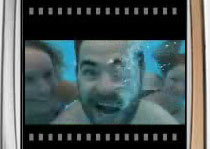 In addition, the winner and two runner-ups each received filmmaking training courses courtesy of Raindance.
In addition, the winner and two runner-ups each received filmmaking training courses courtesy of Raindance.
Meanwhile, Channel 4 has commissioned cutting-edge animators Empire Square – creators of the Gorillaz music project – to create a series of 90-second to three-minute clips to work on a mobile platform.
In an interesting reversal, the animations will also be shown on TV channel E4.
Although it’s clear that there’s no lack of enthusiasm from creatives to get involved with the mobile industry, the big problem for the network owners is how to extract some revenue out of the content.
Although ventures like the ‘Nokia Shorts’ competition are great for attracting favourable PR and showcasing the potential of 3G, they’re not going to get the network cash tills ringing.
In the next instalment, we’ll look at the problem of raising revenue streams from mobile content.
Nokia Shorts
Raindance Festival
Conker Media
broadcastnow (reg required)
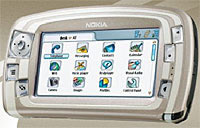 Finnish telecommunications equipment giant Nokia has announced a mobile television pilot, bringing live television broadcasts to mobile devices, starting in Finland today.
Finnish telecommunications equipment giant Nokia has announced a mobile television pilot, bringing live television broadcasts to mobile devices, starting in Finland today.  The mobile TV test uses IP Datacasting (IPDC), which conforms with the DVB-H standard.
The mobile TV test uses IP Datacasting (IPDC), which conforms with the DVB-H standard. 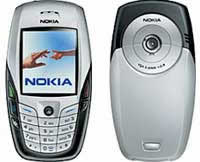 Mindful of the advance of Linux as an OS for mobile handsets,
Mindful of the advance of Linux as an OS for mobile handsets, 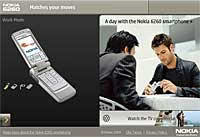 In return Microsoft will also be supporting OMA DRM and AAC music format in their Windows Media player, via a plug in.
In return Microsoft will also be supporting OMA DRM and AAC music format in their Windows Media player, via a plug in.  There’s a big future in locations-based services and Nokia are making their move to provide technology for it. As part of the Nokia mPosition System, Nokia is rolling out the Nokia intelligent Gateway Mobile Location Center (iGMLC) 4.0.
There’s a big future in locations-based services and Nokia are making their move to provide technology for it. As part of the Nokia mPosition System, Nokia is rolling out the Nokia intelligent Gateway Mobile Location Center (iGMLC) 4.0. 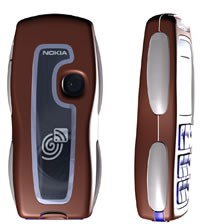 The world’s first Near Field Communications (NFC) product for payment and ticketing will be an enhanced version of the already announced Nokia NFC shell for Nokia 3220 phone.
The world’s first Near Field Communications (NFC) product for payment and ticketing will be an enhanced version of the already announced Nokia NFC shell for Nokia 3220 phone. 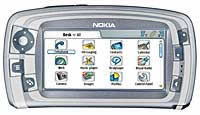 Nokia’s hotly awaited new multimedia smartphone, the
Nokia’s hotly awaited new multimedia smartphone, the  Depending on the sales package, some mobile media applications and services will be pre-installed on the 128 MB MMC, including Mobipocket Reader. This e-book reading application, already popular on Palm/Pocket PC platforms, gives the user access to thousands of titles including current bestsellers.
Depending on the sales package, some mobile media applications and services will be pre-installed on the 128 MB MMC, including Mobipocket Reader. This e-book reading application, already popular on Palm/Pocket PC platforms, gives the user access to thousands of titles including current bestsellers.  The all-time classic Nokia game, Snake, has now hit their gaming platform, the N-Gage. Best of all it’s free to download.
The all-time classic Nokia game, Snake, has now hit their gaming platform, the N-Gage. Best of all it’s free to download. 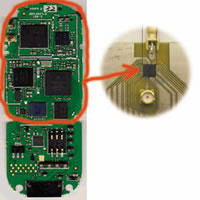 Texas Instruments (TI) has announced they will bring a integrated single-chip solution for mobile phones.
Texas Instruments (TI) has announced they will bring a integrated single-chip solution for mobile phones.